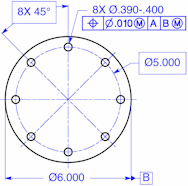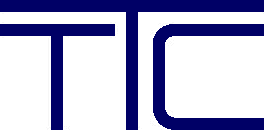COURSE DESCRIPTION
Geometric Dimensioning and Tolerancing, (GD&T) is an information packed course presented through lecture, demonstration, discussion, and written exercises. This course will provide participants with the tolerancing tools and techniques to:
- Ensure interchangeability of mating parts
- Improve quality and productivity
- Reduce costs
- Bid new contracts with confidence
- Interpret and apply ASME Y14.5M–1994 and ASME Y14.5–2009 standards
Preview the Geometric Dimensioning and Tolerancing Course Introduction (pdf)
COURSE OBJECTIVES
Participants will be able to:
- Demonstrate the dramatic advantages of GD&T over traditional tolerancing
- Identify and properly use symbols, terms, and rules
- Properly apply and interpret datum features
- Specify and interpret form, orientation, profile, runout, and location controls
- Specify and interpret several applications of the position control including, maximum material condition, least material condition, zero positional tolerance, fixed and floating fasteners, projected tolerance zones, multiple patterns of features, and composite positional tolerancing
SUGGESTED PARTICIPANTS
|
|
COURSE OUTLINE
- Introduction
- Drawing Fundamentals
- Symbols, Terms, and Rules
- Datums
- Form
- Flatness
- Straightness
- Circularity
- Cylindricity
- Free–state variation
- Orientation
- Perpendicularity
- Parallelism
- Angularity
- Position, General
- Specifying positional tolerance
- Applying RFS and MMC
- Applying RMB and MMB
- Boundary conditions
- Boundary conditions
- Zero positional tolerancing
- Position, Location
- Fixed and floating fasteners
- Projected tolerance zones
- Multiple patterns of features
- Composite positional tolerancing
- Multiple single–segment positional tolerancing
- Nonparallel holes
- Counterbored holes
- Noncircular features at MMC
- Symmetrical features at MMC
- Position, Coaxiality
- Concentricity and Symmetry
- Runout
- Profile

 TECHNICAL TRAINING CONSULTANTS
TECHNICAL TRAINING CONSULTANTS